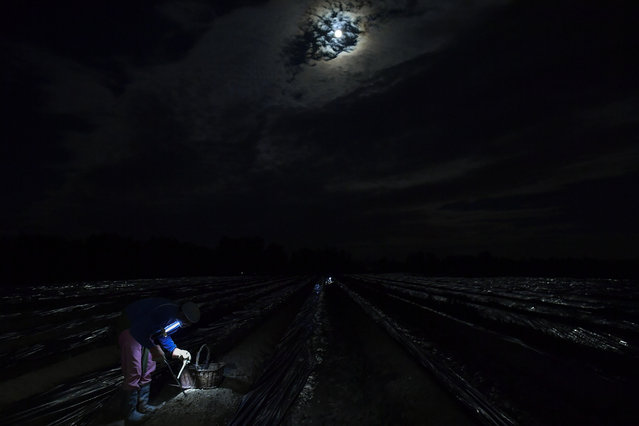
With head-mounted flashlights and boots deep in the mud, a firefly-like party of laborers in northern Spain harvest precious asparagus shoots once the night falls. Dubbed the “white gold” of these northern Spanish farms because of their color and the high price they fetch in markets and restaurants around the world, the stringy delicacies are planted every fall and picked each year between April and June. The delicate process is performed during the night to shield the vegetables from direct sunlight, which could turn the tip of the shoots from white to a purple-like color and dry their much-appreciated moisture. Maintaining the asparagus' high concentration of water is, according to experts, key to their balanced and slightly bitter flavor. That's why the harvest is speedy and followed, within a few hours, with the boiling and canning of the asparagus that aren't sold fresh in the markets. Pickers move fast, in silence, making their way through small mountain-shaped rows of soil that bury the vegetables, lifting the black plastic that covers them and cutting the elongated shoots from their base by stabbing the dunes of mud. Working non-stop from dusk to dawn, a dozen pickers can harvest up to 1.5 tons of asparagus at the height of the asparagus-picking season. Caparroso is in Navarra, a northern Spanish region with cold nights in winter and spring that are said to produce the top-quality asparagus. The cans and jars receive a special label of geographical origin under European Union rules for traditional food products. A Navarrese farmer was selling each kilogram of asparagus (2.2 pounds) for 2.90 euros ($3.4) on a recent visit to Uterga, another town along the Way of St. James, an ancient pilgrimage route. The price can double or triple in food markets and even further when served in restaurants, where the bill for a dish of three or four cooked asparagus dressed with olive oil, vinaigrette or mayonnaise begins at nine euros ($10.60). Locals eat them by holding them with two fingers, upside down and above the head, and slowly bringing them down and into the mouth. The best asparaguses are said to melt at the touch of the tongue. Here: In this Thursday, May 31, 2018 photo, a temporary worker using a lantern collects white asparagus from the field in Caparroso, around 85 km (52 miles) from Pamplona, northern Spain. (Photo by Alvaro Barrientos/AP Photo)
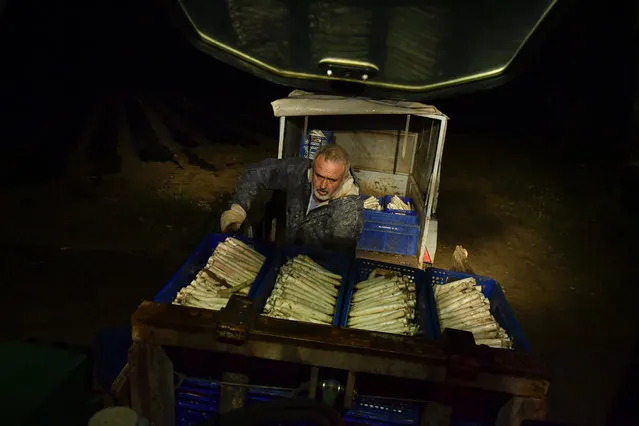
In this Thursday, May 31, 2018 photo, Pedro Pascual, 53, arranges white asparagus after collecting them from a field in Caparroso, around 85 km (52 miles) from Pamplona, northern Spain. Dubbed the “white gold” of these northern Spanish farms because of their color and the high price they fetch in markets and restaurants around the world, the stringy delicacy is planted every fall and picked each year between April and June, at the height of the spring. (Photo by Alvaro Barrientos/AP Photo)
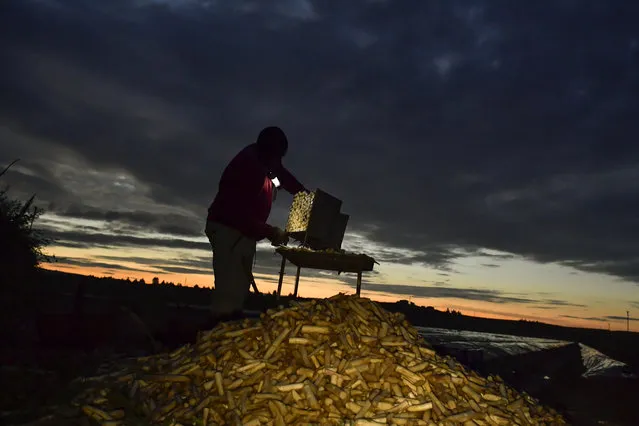
In this Thursday, May 31, 2018 photo, temporary worker Evin, 25, from Cameroon, cleans white asparagus after collecting them from a field in Caparroso, around 85 km (52 miles) from Pamplona, northern Spain. (Photo by Alvaro Barrientos/AP Photo)
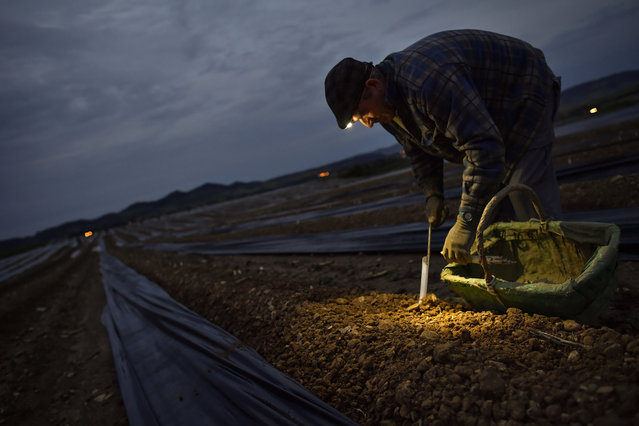
In this Saturday, June 2, 2018 photo, Blas, 53, a Spanish temporary worker, collects asparagus from the field using a lantern in Uterga, around 15 km (9 miles) from Pamplona, northern Spain. (Photo by Alvaro Barrientos/AP Photo)
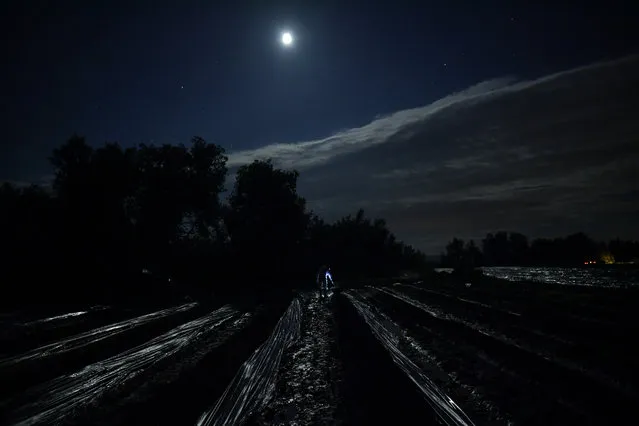
In this Thursday, May 31, 2018 photo, a temporary worker using a lantern, collects asparagus from the field in Caparroso, around 85 km (52 miles) from Pamplona, northern Spain. (Photo by Alvaro Barrientos/AP Photo)
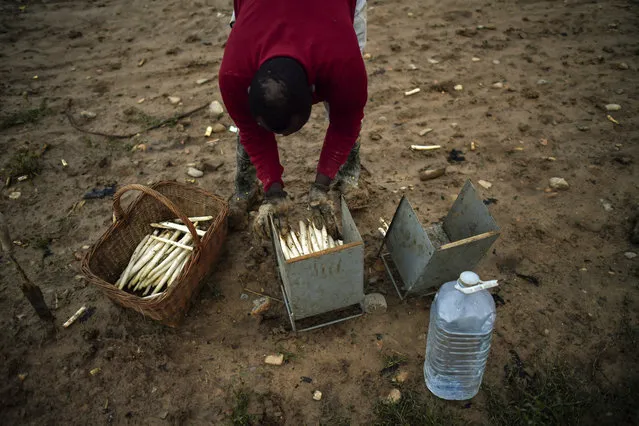
In this Thursday, May 31, 2018 photo, temporary worker Evin, 25, from Cameroon, collects white asparagus from the field early morning, in Caparroso, around 85 km (52 miles) from Pamplona, northern Spain. (Photo by Alvaro Barrientos/AP Photo)
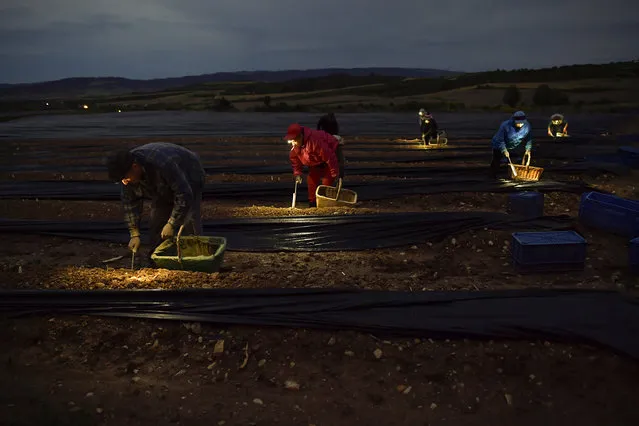
In this Saturday, June 2, 2018 photo, seasonal workers collect white asparagus from the field using lanterns in Uterga, around 15 km (9 miles) from Pamplona, northern Spain. (Photo by Alvaro Barrientos/AP Photo)
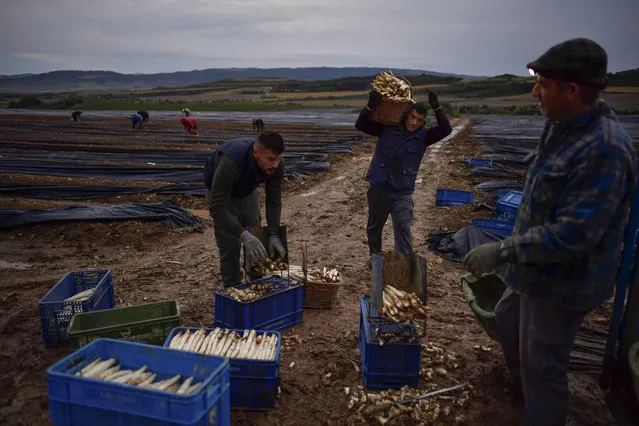
In this photo taken on Saturday, June 2, 2018, seasonal workers collect white asparagus in Uterga, around 15 km (9 miles) from Pamplona, northern Spain. (Photo by Alvaro Barrientos/AP Photo)
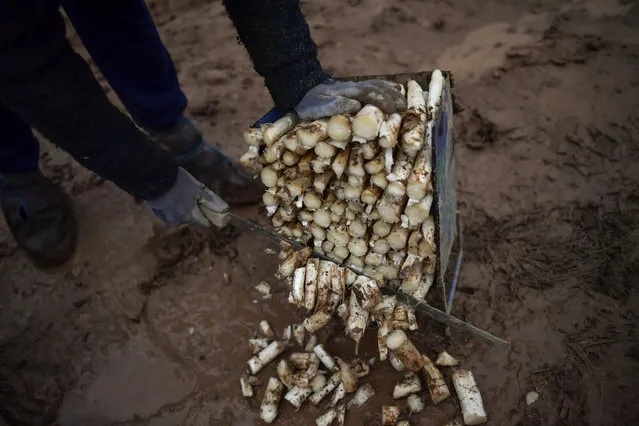
In this Saturday, June 2, 2018 photo, Maria 39, a seasonal worker, prepares white asparagus after collecting them from a field in Uterga, around 15 km (9 miles) from Pamplona, northern Spain. (Photo by Alvaro Barrientos/AP Photo)
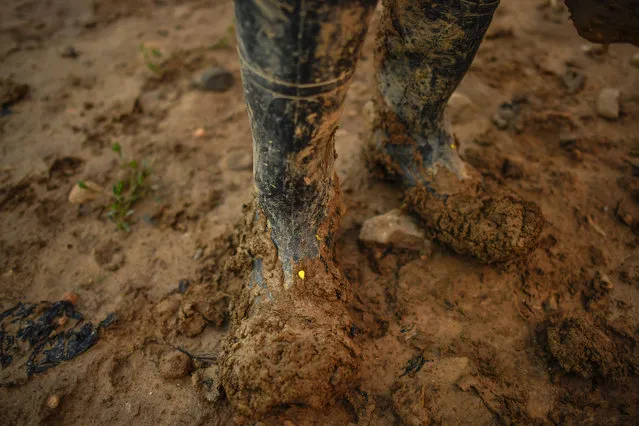
In this Thursday, May 31, 2018 photo, temporary worker Evin, 25, from Cameroon, pauses on his job in his muddy boots, as he collects white asparagus from a field in Caparroso, around 85 km (52 miles) from Pamplona, northern Spain. (Photo by Alvaro Barrientos/AP Photo)
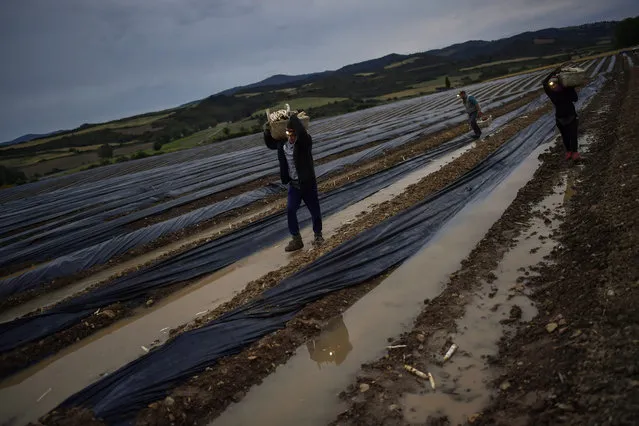
In this photo taken on Saturday, June 2, 2018, seasonal workers collect white asparagus in Uterga, around 15 km (9 miles) from Pamplona, northern Spain. (Photo by Alvaro Barrientos/AP Photo)
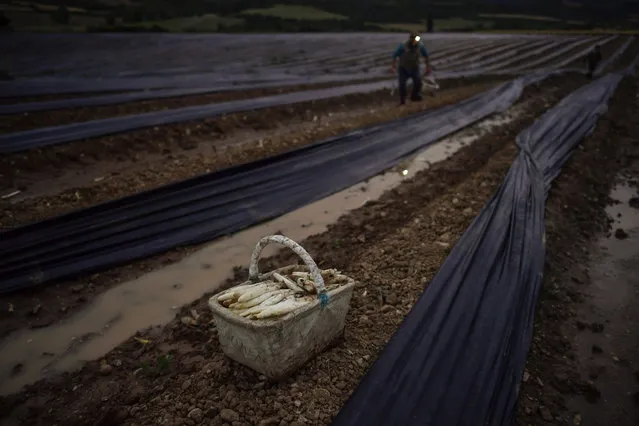
In this photo taken on Saturday, June 2, 2018, a seasonal worker collects white asparagus in Uterga, around 15 km (9 miles) from Pamplona, northern Spain. (Photo by Alvaro Barrientos/AP Photo)
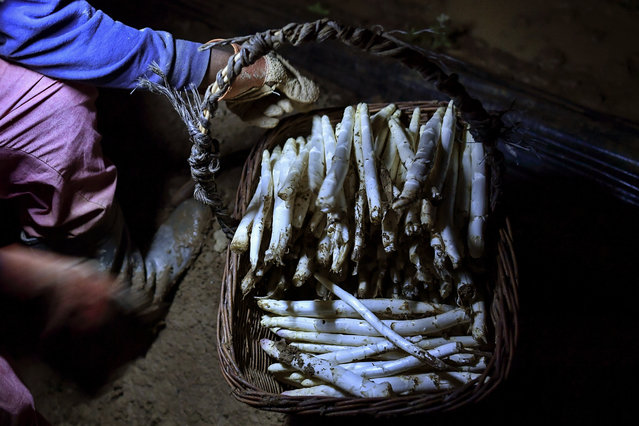
In this Thursday, May 31, 2018 photo, a temporary worker using a lantern collects white asparagus from a field in Caparroso, around 85 km (52 miles) from Pamplona, northern Spain. (Photo by Alvaro Barrientos/AP Photo)
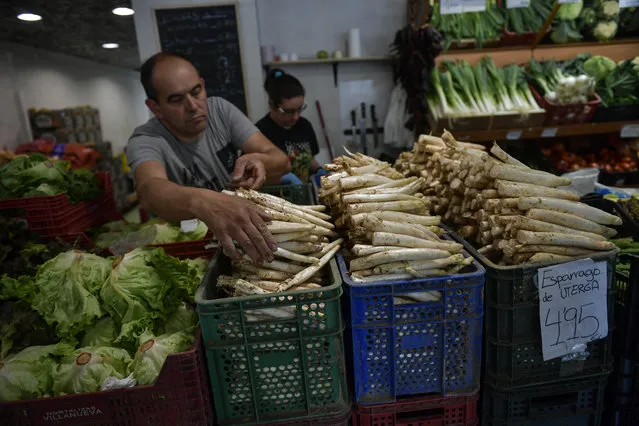
In this Friday, June 1, 2018 photo, a trader organises white asparagus for customers at his store in Pamplona, northern Spain. (Photo by Alvaro Barrientos/AP Photo)
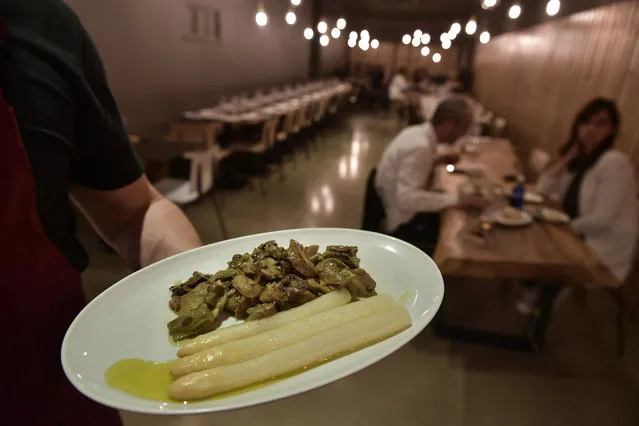
In this Friday, June 1, 2018 photo, a cook holds a plate with white asparagus ready to be eaten, at a restaurant in Pamplona, northern Spain. (Photo by Alvaro Barrientos/AP Photo)
09 Jun 2018 00:03:00,
post received
0 comments
